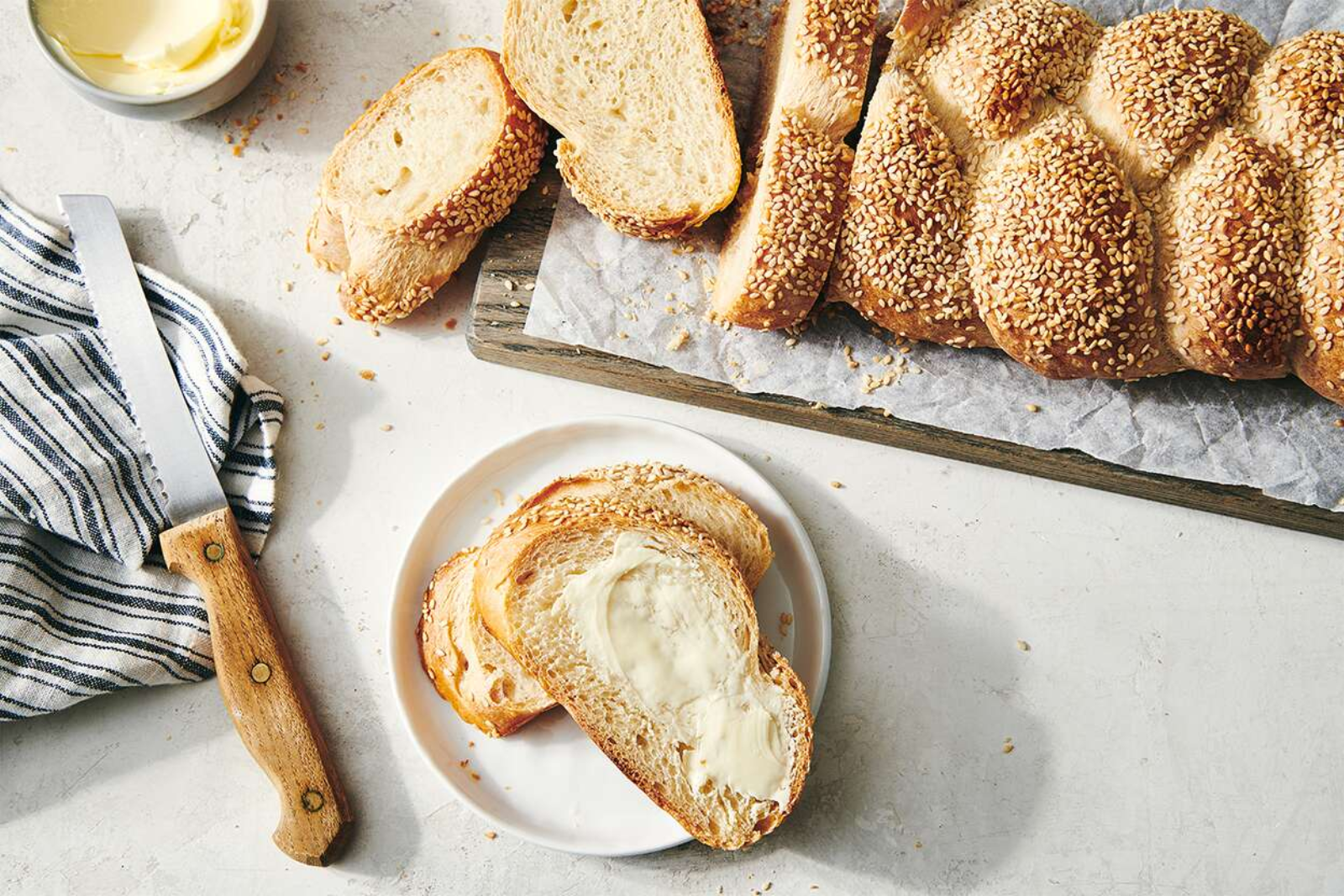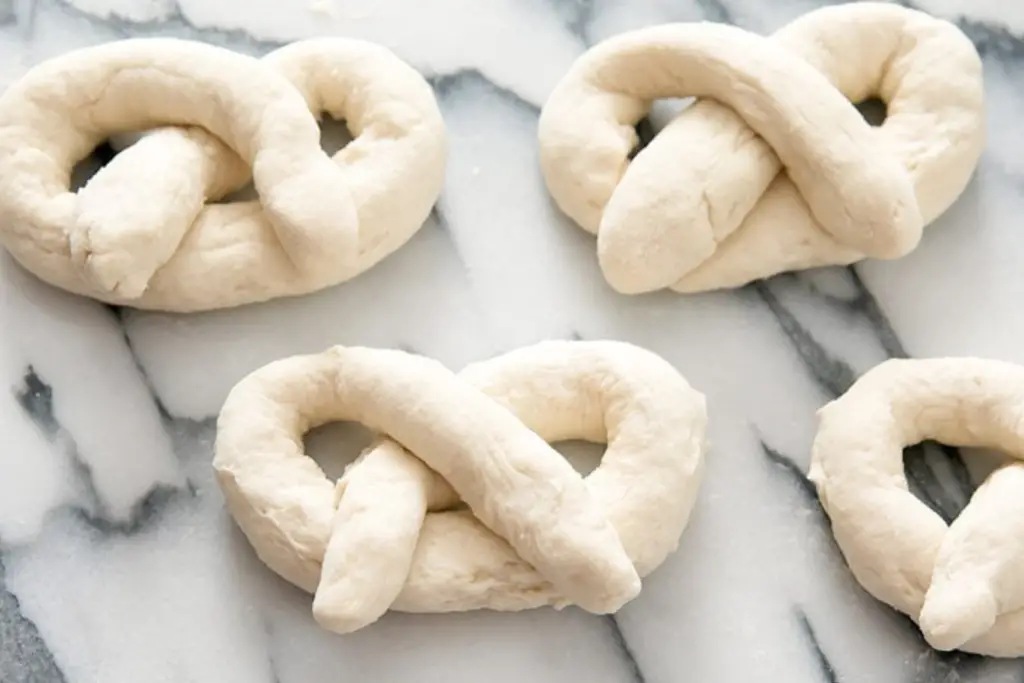
Italian bread is a delicious staple in many households. Whether you’ve baked it yourself or purchased it from a bakery, freezing Italian bread can be a convenient way to preserve its freshness and enjoy it at a later time. Freezing Italian bread is a straightforward process that requires minimal effort. By following these simple steps, you can freeze Italian bread while maintaining its taste and texture.
Here’s a guide on how to freeze Italian Bread:
Step 1: Choose fresh Italian bread
When it comes to freezing Italian bread, selecting a loaf that is fresh and free from any signs of spoilage is essential. Freshness plays a vital role in preserving the quality and flavor of the bread during the freezing process. Here’s why it matters:
- Flavor preservation: Freshly baked Italian bread has a distinct aroma and taste that makes it so enjoyable. By starting with a fresh loaf, you can ensure that the flavors are preserved even after freezing. Stale or past-their-prime loaves may not freeze as well and can result in a less appetizing taste once thawed.
- Texture retention: Fresh bread has a desirable texture, with a crispy crust and a soft, chewy interior. Freezing bread can alter its texture, and starting with a fresh loaf helps maintain its original qualities. Stale or dry bread may become even more brittle after freezing, losing its desirable texture.
- Longer shelf life: Freezing fresh Italian bread extends its shelf life, allowing you to enjoy it at a later time. By starting with a loaf that is already fresh, you’re essentially “locking in” its quality and buying yourself more time to consume it before it spoils.
To ensure freshness, examine the loaf carefully before freezing. Look for any signs of mold, discoloration, or an off-putting smell. A loaf that is firm to the touch and has a crispy crust is typically a good indicator of freshness.
Step 2: Slice the bread (optional)
Slicing the Italian bread before freezing is an optional step that can enhance the convenience of thawing and using the bread later on. Here’s why slicing the bread before freezing can be beneficial:
- Portion control: Slicing the bread allows you to portion it according to your needs. By slicing it into individual slices before freezing, you can easily take out and thaw only the amount you require at a given time. This is particularly useful if you don’t plan on consuming the entire loaf in one sitting.
- Easy thawing: Frozen whole loaves of Italian bread can take longer to thaw completely. Slicing the bread into smaller portions reduces the thawing time significantly. Thinner slices will thaw faster and more evenly, allowing you to enjoy the bread more quickly when you’re ready to use it.
- Convenience: Sliced bread is more convenient for various culinary uses. Whether you’re making sandwiches, toasting slices for breakfast, or using them for bruschetta, having pre-sliced Italian bread in the freezer saves time and effort when you’re in a hurry or need a quick meal.
To slice the bread, use a serrated knife, preferably one with a long blade. This type of knife allows you to cut through the crust without compressing or squishing the bread’s soft interior. You can slice the bread to your desired thickness, keeping in mind that thinner slices tend to thaw faster.
Step 3: Wrap the bread
To ensure the preservation of the Italian bread’s quality and prevent freezer burn, it’s crucial to tightly wrap it in either aluminum foil or plastic wrap before placing it in the freezer. Here’s why proper wrapping is essential:
- Protection from freezer burn: Freezer burn occurs when the surface of food is exposed to air and becomes dehydrated. It can result in dry, discolored patches and a loss of flavor and texture. By tightly wrapping the bread, you create a barrier that minimizes air exposure, reducing the risk of freezer burn.
- Moisture retention: Italian bread has a delicate balance of moisture that contributes to its desirable texture. When frozen without proper wrapping, the bread can lose moisture, becoming dry and less enjoyable to eat. Wrapping the bread tightly helps retain its moisture content, ensuring that it remains moist and flavorful when thawed.
- Protection from odors: The freezer environment can absorb odors from other food items, affecting the taste and aroma of the bread. By wrapping the bread tightly, you create an additional layer of protection against potential odor transfer, preserving the bread’s original flavors.
To wrap the bread, begin by placing it in the center of a sheet of aluminum foil or plastic wrap. If you’ve sliced the bread, wrap each slice individually or wrap the entire loaf. Bring the edges of the wrap together, folding and sealing them tightly to create a secure package. Make sure there are no exposed areas where air can penetrate.
If using aluminum foil, you can wrap the bread with an additional layer of plastic wrap for added protection against moisture loss and freezer burn. This double-layered wrapping is particularly useful for long-term freezing.
Step 4: Place in a freezer-safe bag
After wrapping the Italian bread tightly in aluminum foil or plastic wrap, it’s recommended to place it inside a freezer-safe bag for additional protection. This step helps safeguard the bread from freezer burn, moisture loss, and potential odor transfer. Here’s why using a freezer-safe bag is beneficial:
- Enhanced protection against freezer burn: Freezer-safe bags provide an extra layer of insulation that helps shield the bread from freezer burn. These bags are designed to be more resistant to air and moisture penetration than regular storage bags, minimizing the risk of dehydration and maintaining the bread’s quality.
- Moisture retention: The freezer environment can be dry, and without proper protection, the bread may lose moisture, resulting in a dry and less appetizing texture. Placing the wrapped bread in a freezer-safe bag helps retain moisture and prevents it from escaping, ensuring that the bread stays moist and enjoyable when thawed.
- Odor prevention: Freezer-safe bags offer an added barrier against unwanted odors seeping into the bread. In the freezer, various food items can release odors that might affect the taste and aroma of the bread. By enclosing the wrapped bread in a bag, you create an extra layer of defense, preserving its original flavors and preventing any cross-contamination of odors.
To place the wrapped bread in a freezer-safe bag, select a bag specifically designed for freezer use. Open the bag and carefully insert the wrapped bread, ensuring there are no exposed areas. Squeeze out as much air as possible before sealing the bag tightly. The goal is to create a vacuum-like environment inside the bag, reducing the potential for freezer burn.
If the bread is sliced, you can arrange the slices in a single layer inside the bag, separating them with parchment paper or plastic wrap to prevent sticking.
Step 5: Label and date the bag
Labeling and dating the bag that contains the frozen Italian bread is an important step in the freezing process. By providing a clear indication of the date of freezing, you can keep track of the bread’s storage time and prioritize its use accordingly. Here’s why labeling and dating the bag is beneficial:
- Freshness monitoring: Frozen bread, like any other food item, has a limited shelf life. Over time, the quality and taste of the bread may deteriorate. By labeling the bag with the date of freezing, you have a reference point to gauge the freshness of the bread. This allows you to use the bread within a reasonable timeframe to ensure optimal taste and texture.
- Rotation management: If you regularly freeze bread or have multiple loaves in the freezer, labeling and dating the bags help you manage rotation. By using the oldest bread first, you avoid unintentionally letting it sit in the freezer for too long, reducing the risk of it becoming freezer-burned or losing its quality.
- Inventory organization: Labeling the bags with the freezing date enables you to keep an organized inventory of your frozen bread. You can easily identify and locate the specific loaf or slices you wish to thaw, streamlining your meal planning and minimizing waste.
When labeling the bag, use a permanent marker to write the date of freezing in a clear and visible manner. You can also include any additional information you find useful, such as the type of bread or any special instructions. Place the label in a prominent location on the bag for easy reference.
Step 6: Freeze the bread
After properly wrapping and labeling the bag containing the Italian bread, it’s time to place it in the freezer. However, it’s important to take a few precautions during this step to ensure that the bread freezes effectively and maintains its shape and quality. Here’s why proper freezing techniques are essential:
- Preserving shape and texture: Placing the bagged Italian bread in a flat position during freezing helps maintain its shape and texture. If the loaf is placed in an upright position or in a way that it can easily shift or get squished, it may lose its original form and become misshapen. Freezing the bread flat ensures that it retains its intended appearance, making it more visually appealing and easier to handle when thawed.
- Efficient freezing: When the bread is laid flat in the freezer, it allows for more efficient and even freezing. This is particularly important for larger loaves or thicker slices. By maximizing surface area exposure to the cold air, the bread freezes more quickly and uniformly, reducing the risk of ice crystal formation or uneven texture changes.
- Storage optimization: Placing the bagged bread in a flat position creates a space-saving arrangement in the freezer. It allows you to stack multiple loaves or other frozen items on top without compromising their shape. This organized storage method helps maximize the freezer’s capacity and ensures that the bread remains well-preserved until you’re ready to use it.
To freeze the bread, open the freezer and find a suitable spot where the bread can lie flat without being disturbed or crushed. If you have multiple bags of bread to freeze, stack them carefully, ensuring that each bag is flat and that there is sufficient space between them for proper airflow.
It’s worth noting that freezing the bread as quickly as possible is ideal for maintaining its freshness. Therefore, if your freezer has a “quick freeze” or “fast freeze” setting, you can activate it for a short period to accelerate the freezing process.
How long can I store frozen Italian bread?
Frozen Italian bread can be stored for up to three months without significant quality loss. However, for the best taste and texture, it’s recommended to consume the bread within one to two months of freezing.
Step 7: Thaw and enjoy
After freezing the Italian bread, the time will come when you’re ready to savor its deliciousness. Thawing the bread properly is crucial to ensure it regains its optimal taste, texture, and enjoyment. Here’s why proper thawing and timely consumption are important:
- Retaining taste and texture: Thawing the Italian bread at room temperature allows it to gradually regain its original taste and texture. Rapid thawing methods, such as using a microwave or hot water, can lead to uneven thawing and potential texture changes, making the bread less enjoyable. Allowing the bread to thaw naturally ensures that its desirable crust, soft interior, and overall flavor are preserved.
- Individual slice convenience: If you freeze individual slices, it’s convenient to remove and thaw only the number of slices you need at a given time. This prevents unnecessary waste and allows you to enjoy the bread slice by slice, preserving the remaining frozen portions for later use.
- Freshness timeframe: While frozen bread can maintain its quality for an extended period, it’s best to consume the bread within a few days of thawing for the optimal taste and texture. The thawed bread may gradually lose its freshness over time, becoming drier or less flavorful. Enjoying the bread within this timeframe ensures you experience its delightful qualities at their peak.
To thaw the bread, remove it from the freezer and place it on a clean countertop or cutting board at room temperature. If you’ve frozen individual slices, separate them and leave them to thaw individually. Avoid direct exposure to sunlight or heat sources, as they can accelerate thawing unevenly and may result in a less desirable texture.
The thawing time will vary depending on the size of the bread and the room temperature. Generally, a loaf of Italian bread will thaw within a few hours, while individual slices may thaw in less time.
Once the bread is completely thawed, it’s ready to be enjoyed. You can use it for sandwiches, toast it, or incorporate it into your favorite recipes. Remember to consume the thawed bread within a few days for the best taste and texture.
Other related questions
Can I refreeze Italian bread?
No, it is generally not recommended to refreeze Italian bread once it has been thawed. Refreezing can compromise the bread’s quality, leading to changes in texture, taste, and freshness. It is best to consume the bread after thawing, and if there are any leftovers, store them properly to maintain their quality.
How do I know if the Italian bread has gone bad after being frozen?
After being frozen, you can determine if Italian bread has gone bad by examining its appearance, smell, and texture. Look for signs of mold growth, excessive dryness, or a change in color. If the bread has an off-putting odor or tastes noticeably different, it may indicate spoilage. Trust your senses and discard the bread if any concerning changes are observed.
Can I freeze Italian bread with toppings, such as garlic butter?
It’s generally better to freeze Italian bread without toppings or spreads. Toppings like garlic butter may become soggy or separate during freezing and thawing. It’s advisable to freeze the plain bread and add toppings or spreads after thawing.
Can I freeze leftover Italian bread crumbs?
Yes, leftover Italian bread crumbs can be frozen for later use. Place them in an airtight container or freezer bag and store in the freezer. They can be used directly from frozen in recipes such as breading or topping for casseroles.
Can I freeze Italian bread with fillings or ingredients like cheese or herbs?
Freezing Italian bread with fillings or ingredients like cheese or herbs is possible, but the quality of the fillings may be affected. Ingredients like cheese can become watery or change texture upon thawing. It’s often better to freeze the plain bread and add the fillings or ingredients after thawing.








